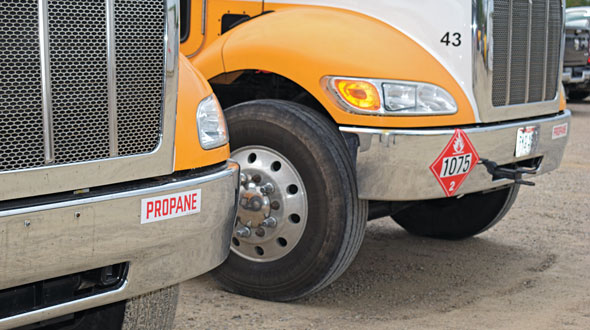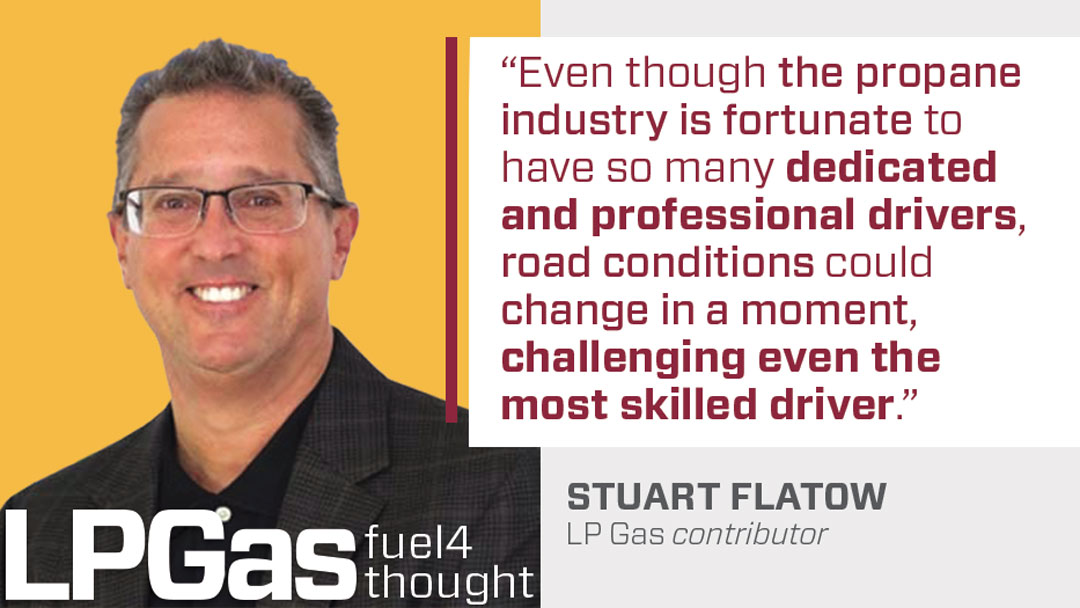Avoid rollovers: Keeping bobtails ‘shiny side up’
“The most important thing for tank truck safety is to keep the shiny side up,” according to National Tank Truck Carriers past president Cliff Harvison. What he means is how important it is to avoid tank truck rollovers.
Bobtail rollovers cause all sorts of headaches, from injuries to property loss to bad press from angry citizens stuck in nightmare traffic jams.
The topic of bobtail rollovers surfaced in 2010 after AmeriGas personnel began noticing an increase in these incidents. That led to discussions among major propane companies about the need for a safety program addressing rollovers.
While the number of bobtail rollovers wasn’t tracked, statistics at several major propane retailers led Paul Grady, then an executive with Heritage Propane, to estimate that 120 to 150 rollovers occurred each year throughout the industry. Grady urged the Propane Education & Research Council (PERC) to develop a program to address this issue, estimating that there were approximately 35,000 bobtails in daily service.
Avoiding rollovers
Sloshing and shifting cargo: The force of sloshing underscores a rule for bobtail drivers. If the vehicle travels off the road, drivers are instructed not to jerk the steering wheel to get the vehicle back onto the road. These quick reactions can set the sloshing motion into effect and potentially lead to a rollover.
Drivers know how to drive: Most bobtail rollovers do not occur because the driver did not know how to drive. Rather, according to the PERC rollover prevention program, there are usually some other common causes, such as driver distraction, inattentiveness and simple complacency.
Given a bobtail’s high center of gravity and sloshing cargo, even the simple act of taking two to three seconds for a drink or snack can land you in a ditch on the side of the road.
In fact, even though rollovers can happen when you drive too fast for the conditions, many of them occur at slower speeds.
Contributing factors: Other factors contributing to rollovers include physical characteristics, such as vehicle design, specifications, load, road and weather conditions.
Walk the road/pavement
Bobtail drivers often deliver in wet conditions and on narrow and winding roads that sometimes include small, wooden bridges.
Just as your drivers would walk the ground between the bobtail and tank to uncover trip hazards, so too should they inspect rural bridges, dirt roads and embankments prior to driving over them or risk plunging into a creek due to unstable conditions on the ground.
Poor maintenance increases your risk
Poor vehicle maintenance can also be a factor in rollovers. Bad brakes, underinflated tires and other overlooked maintenance issues can contribute to a rollover.
Take the time to perform detailed pre-trip and post-trip inspections of your bobtail. If you are concerned about the safety of your vehicle, contact the proper maintenance personnel or your supervisor before leaving on your route.
Closing thoughts
Heating season in the propane industry means more bobtails on the road, often driving in less-than-ideal conditions. Even though the propane industry is fortunate to have so many dedicated and professional drivers, road conditions could change in a moment, challenging even the most skilled driver. Please get the PERC program and continue to train your drivers on staying safe on the road.
Stuart Flatow spent 18 years as the Propane Education & Research Council’s vice president of safety and training before stepping down in February 2019.
NOTE: The opinions and viewpoints expressed herein are solely the author’s and should in no way be interpreted as those of LP Gas magazine or any of its staff members.


















